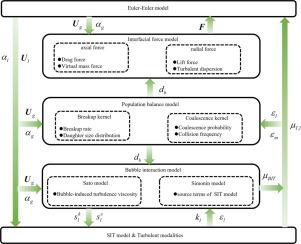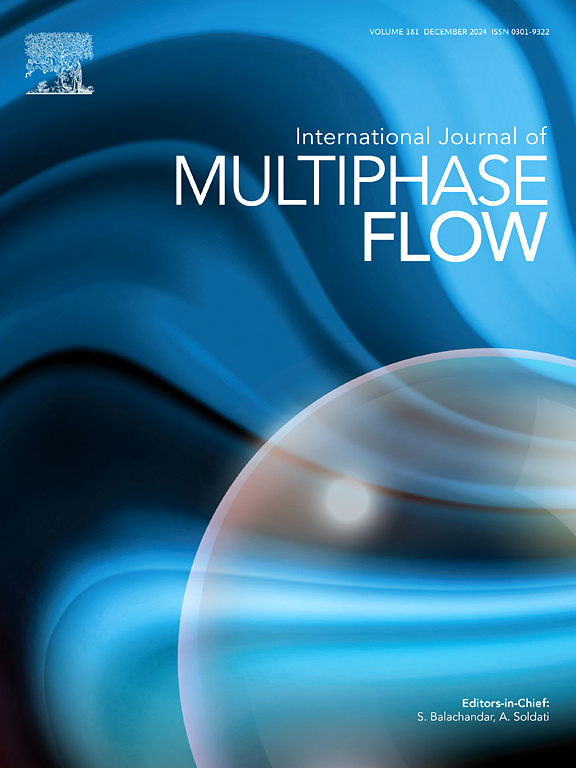Effect of two-phase turbulent modalities and bubble-induced turbulence on polydispersed bubbly flow in continuous casting mold
IF 3.6
2区 工程技术
Q1 MECHANICS
International Journal of Multiphase Flow
Pub Date : 2024-12-16
DOI:10.1016/j.ijmultiphaseflow.2024.105104
引用次数: 0
Abstract
A crucial challenge for gas-liquid two-phase flow is modeling two-phase turbulent modalities and bubble-induced turbulence (BIT). Although many shear-induced turbulence (SIT) models have been established and widely used in single-phase flow, there is no consensus on extending single-phase flow to gas-liquid flow. This work presents the development of the novel population balance model (PBM) for simulating multiphase flows in continuous casting (CC) mold. The effect of two-phase turbulent modalities, SIT and BIT mechanisms on flow pattern, bubble distribution and bubble diameter were studied and against with the experimental data. The results show that the RNG model shows better agreement than other models for predicting flow patterns and bubble size. Compared with the experimental values, the mean relative error of Sauter mean diameter is 5.74 %. Furthermore, the correlation between three turbulent modalities and the SIT has been revealed. The turbulence properties predicted by dispersed-modality and per-modality are highly consistent, and the mixture-modality extremely overestimates the bubble size. The dispersed-modality is suitable for simulating gas-liquid flow for CC mold. Finally, we reveal the coupling mechanism between BIT and SIT models. The Simonin model is insufficient to describe the BIT effect due to the low momentum exchange. The Sato model only caused slight perturbation for the Standard model and significantly increased the turbulence viscosity predicted by RNG model. The coupling between the RNG and Sato models can achieve a circulation feedback effect.

求助全文
约1分钟内获得全文
求助全文
来源期刊
CiteScore
7.30
自引率
10.50%
发文量
244
审稿时长
4 months
期刊介绍:
The International Journal of Multiphase Flow publishes analytical, numerical and experimental articles of lasting interest. The scope of the journal includes all aspects of mass, momentum and energy exchange phenomena among different phases such as occur in disperse flows, gas–liquid and liquid–liquid flows, flows in porous media, boiling, granular flows and others.
The journal publishes full papers, brief communications and conference announcements.

 求助内容:
求助内容: 应助结果提醒方式:
应助结果提醒方式:


